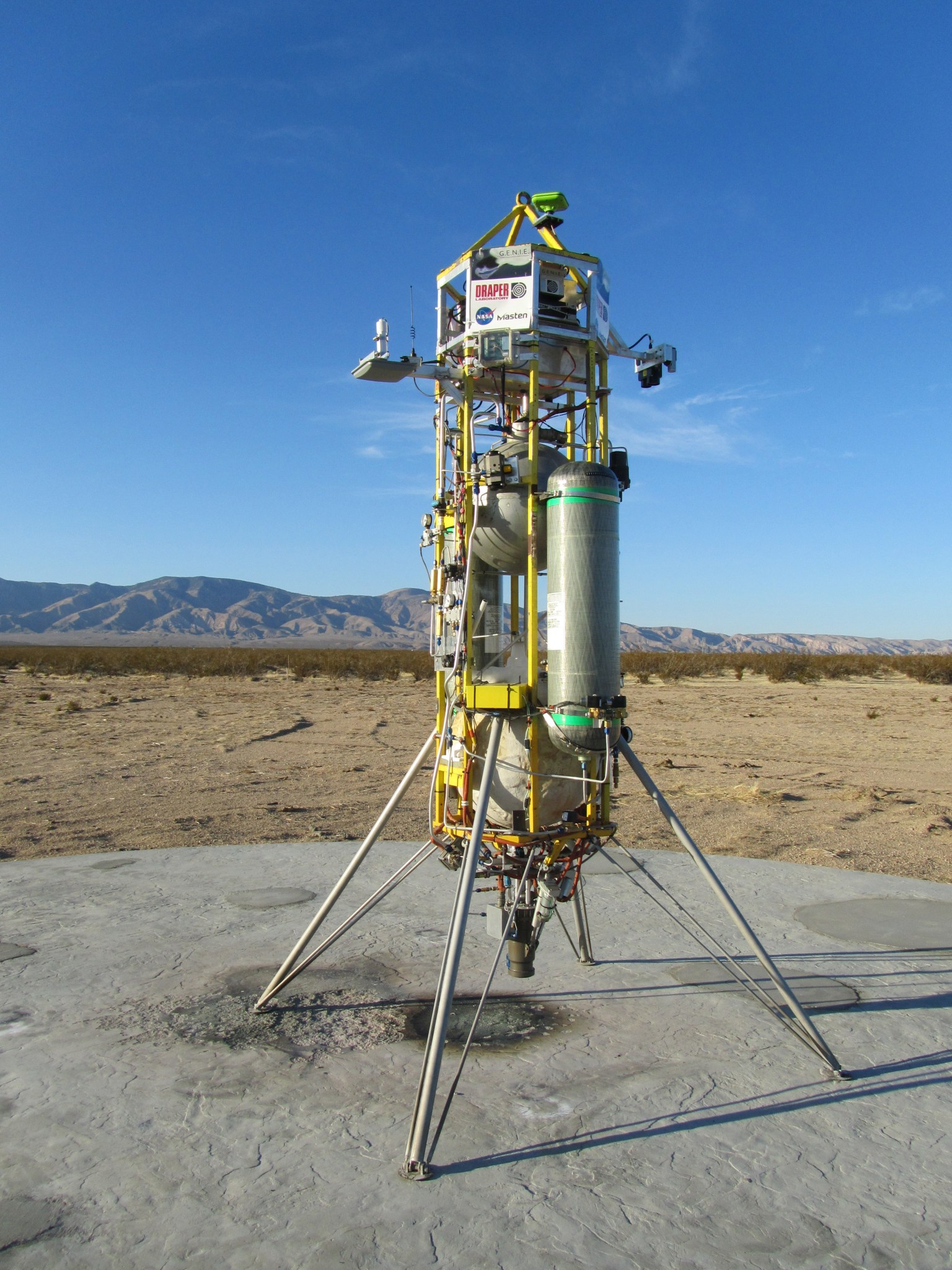MOJAVE, Calif. – The first successful free flight of a new rocket-powered vertical landing demonstrator occurred recently at Mojave Air and Space Port, Mojave, Calif. The flight used a new flight control system concept that will enable future demonstrations of landing technologies needed for exploration of planets and moons, as well as near-Earth objects, like asteroids. NASA’s Flight Opportunities Program sponsored the flight and control system test.
Masten Space Systems’ Xombie suborbital rocket lifted off the launch pad Feb. 2 while being controlled by Draper Laboratory’s Guidance Embedded Navigator Integration Environment (GENIE) system. The rocket rose 164 feet, moved laterally 164 feet, and then landed on another pad after a 67-second flight. The flight represents the first step in developing a test bed capability that will allow for landing demonstrations that start at much higher altitudes-several miles above the ground.
With a growing interest in vertical takeoff and landing with commercial suborbital launch vehicles, the Flight Opportunities Program initiated the development of a commercial landing technology demonstration test bed. Draper Laboratory, of Cambridge, Mass., was selected to lead this effort. Draper Lab subsequently selected Masten Space Systems to provide the vertical takeoff and landing flight vehicle to demonstrate this new landing technology.
“The Draper and Masten team has done a tremendous job pulling together this flight demonstration in a short amount of time,” said John Kelly, Flight Opportunities Program manager at NASA Dryden. “Draper was awarded this task in September 2011. This capability will allow the program to quickly demonstrate landing technologies for future space missions.”
The Flight Opportunities Program, part of NASA’s Space Technology Program, is enabling demonstration and maturation of new technology payloads using suborbital reusable launch vehicles, high-altitude balloons and parabolic aircraft to expose technology payloads to space-relevant environments of reduced gravity or near-space flights.
The program facilitates low-cost access to suborbital environments for a broad range of innovators as a means of advancing space technology development and supporting the evolving entrepreneurial commercial space industry. Among NASA’s key goals for the program is regular, frequent and predictable access to near-space at a reasonable cost with easy recovery of intact payloads.
Watch video of the flight on YouTube at goo.gl/ZIDYO
For more on Masten Space Systems, visit http://www.mastenspace.com/
For more on Draper Laboratory, visit http://www.draper.com/
For more about NASA’s Flight Opportunities Program, visit: https://www.nasa.gov/offices/oct/crosscutting_capability/flight_opportunities/index.html
– end –
text-only version of this release
To receive status reports and news releases issued from the Dryden Newsroom electronically, send a blank e-mail message to dfrc-subscribe@newsletters.nasa.gov. To unsubscribe, send a blank e-mail message to dfrc-unsubscribe@newsletters.nasa.gov. The system will confirm your request via e-mail.
Leslie Williams
NASA Dryden Flight Research Center
661-276-3893
leslie.a.williams@nasa.gov
Colin Ake
Masten Space Systems, Inc.
678-551-2253
cake@masten.aero
Jeremy Singer
Draper Laboratory
617-258-2464
jsinger@draper.com






























